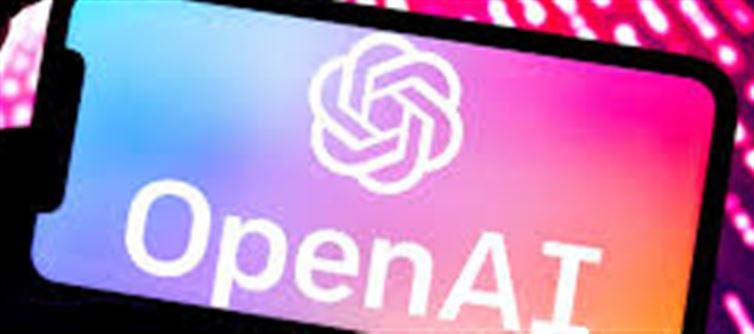
1. The End of an Ad-Free Experience?
The ad-free era of ChatGPT could soon be coming to an end. As reported, OpenAI is considering the introduction of ads in its popular AI-powered chatbot, a shift that would mark a significant change for its user experience. While the company already offers various subscription tiers, rumors have been circulating that OpenAI is looking to monetize ChatGPT further by integrating advertisements.
· User Experience Change: Since its launch, ChatGPT has been free from traditional advertising, offering users uninterrupted access to its conversational abilities. The potential introduction of ads raises questions about whether it will impact the smooth experience that many users currently enjoy.
2. OpenAI’s Subscription Models & The Drive for Revenue
OpenAI already monetizes ChatGPT through premium subscription plans, such as ChatGPT Plus, which offers faster responses, early access to new features, and priority access during high-demand periods. However, with increasing operational costs and the continuous need for development, the company might be exploring additional avenues for generating sustained revenue.
· Current Subscriptions: ChatGPT Plus is priced at $20/month and grants users access to GPT-4 (the more advanced version of the AI), while free-tier users are limited to GPT-3.5. With the added pressure of costs associated with AI development, especially for processing power and data storage, OpenAI could be looking at ads as a way to offset some of those expenses.
3. Why Ads?
Integrating ads into ChatGPT could be a natural next step for OpenAI to expand its revenue streams, given the popularity and massive user base of the product. The AI chatbot has already seen significant adoption across multiple sectors — from business and education to entertainment — which opens up a wealth of potential advertising opportunities.
· Monetization Strategy: Introducing ads would allow OpenAI to offer a free version of the service for all users while generating revenue from advertisers. However, how ads would be integrated (e.g., within conversations or as banner ads) remains unclear.
· Potential Benefits: For OpenAI, ads could serve as a way to generate recurring income while keeping the free version accessible to millions of users. The move could also benefit users who prefer not to pay for premium features but are willing to endure some ads in exchange for free access.
4. A New Leadership for Monetization
As the company looks for a new leader to spearhead its monetization efforts, OpenAI is reportedly searching for a senior executive to oversee these strategies. This would likely involve deciding on how ads could be seamlessly integrated into the platform without compromising the user experience. The new leadership will play a critical role in balancing user satisfaction with the company’s financial objectives.
· Leadership Shake-Up: While OpenAI has seen incredible growth in recent years, the search for a monetization leader indicates that the company might be entering a more aggressive phase of revenue generation. The right person will need to craft a strategy that doesn’t alienate users while still capturing the massive advertising potential in AI-driven services.
5. User Reactions: Will Ads Impact ChatGPT’s Popularity?
Introducing ads could spark mixed reactions from users, who have become accustomed to an ad-free experience on the platform. Many users might view the change as an intrusion into the conversational nature of ChatGPT, especially if ads are frequent or disruptive.
· User Concerns: The potential for invasive ads could hurt the platform’s reputation, as many AI users value the smooth and focused interaction that ChatGPT offers. On the other hand, OpenAI might find ways to make ads less intrusive (e.g., more relevant or placed at specific moments in the conversation).
6. Will Ads Impact Free Users or Premium Subscribers?
The impact of ads could differ between free-tier users and premium subscribers. Free users could experience the brunt of ad-related changes, while premium users might continue to enjoy an ad-free experience, similar to what’s offered in other premium software models.
· Tiered Experience: OpenAI might use ads as a way to subsidize the free version of ChatGPT and encourage more users to upgrade to premium tiers for an ad-free experience. The balance between accessibility and monetization will be key to maintaining user trust.
7. The Bigger Picture: How Will Ads Shape AI's Future?
The introduction of ads in ChatGPT could set a precedent for other AI-based platforms. If successful, this could become a widespread trend where AI tools—whether for productivity, learning, or entertainment—use advertising to fund their operations.
· AI Monetization: ChatGPT’s monetization journey could be a model for future AI services. As more companies turn to AI to enhance their products, the revenue potential from AI-driven platforms could become substantial, leading to a new era of ad-supported AI products.
Conclusion: A New Era for ChatGPT?
While the ad-free era of ChatGPT may soon be over, the potential integration of ads signals a shift in the AI industry toward more sustainable monetization strategies. Whether this move will satisfy users and maintain the platform's popularity remains to be seen. As OpenAI searches for leadership to drive this new era of revenue generation, it’s clear that the company is entering a new phase—one where ads could become an integral part of the user experience.
Disclaimer:
The views and opinions expressed in this article are those of the author and do not necessarily reflect the official policy or position of any agency, organization, employer, or company. All information provided is for general informational purposes only. While every effort has been made to ensure accuracy, we make no representations or warranties of any kind, express or implied, about the completeness, reliability, or suitability of the information contained herein. Readers are advised to verify facts and seek professional advice where necessary. Any reliance placed on such information is strictly at the reader’s own risk..jpg)




 click and follow Indiaherald WhatsApp channel
click and follow Indiaherald WhatsApp channel